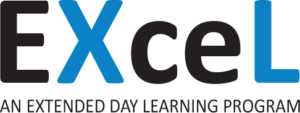After Washington state’s waiver from the accountability requirements of the No Child Left Behind (NCLB) Act was not renewed for 2014-15, schools in Washington state reverted back to reporting Adequate Yearly Progress (AYP). When this happened, schools in our state were required to offer Supplemental Education Services (SES), in reading and math, to qualifying families.
ESD 112 responded quickly with a tutoring program, EXceL, that helps students make gains in math and reading, keeps Title I dollars in local schools, and complies with federal improvement guidelines.
Parents may select any provider from the state-approved list, and ESD 112’s EXceL has been a top choice for families, likely because of its close partnership with local districts. Through EXceL, students receive tutoring at their home school, sometimes even with their own classroom teacher, in groups of 1 to 5 students. Because districts must set aside 20% of their Title I funding for SES, hiring their own teachers as tutors bring district funds back to the district.
More than 600 students in 44 schools in the ESD 112 region are receiving tutoring through ESD 112’s EXceL program to provide Supplemental Education Services (SES) under the No Child Left Behind (NCLB) Act.
Associate Superintendent for Teaching and Learning Barbara Lomas credits EXceL’s popularity in part to the program’s structure, through which certificated teachers from a student’s home school or district are hired. “Sometimes it’s a child’s classroom teacher who knows the student, the curriculum, and the expectations,” she said. “Parents are often more comfortable when the tutoring takes place at a child’s home school with teachers and other students they know.”
Most importantly, EXceL program data shows that participants are making academic gains:
- Pre- and post-assessment data from the 2010-11 school year show that student performance in math increased by an average of 30%.
- Students who took the CORE reading assessment for grades 2-6 increased their reading performance by 1.4 grade levels on average.
- One hundred percent of students who took the pre-reading assessment made gains in their reading performance.






 ESD 112 equalizes educational opportunities for learning communities through innovative partnerships, responsive leadership, and exceptional programs.
ESD 112 equalizes educational opportunities for learning communities through innovative partnerships, responsive leadership, and exceptional programs.